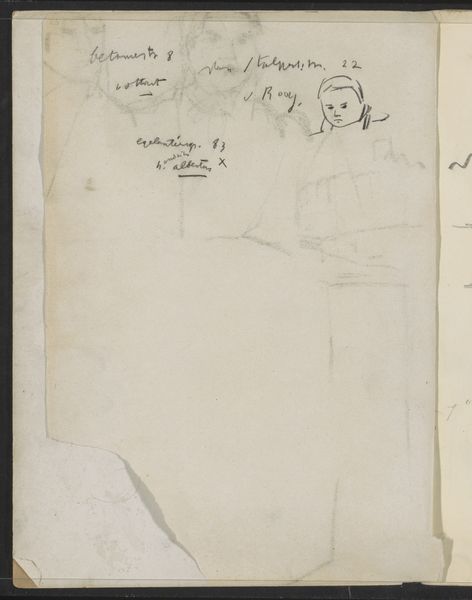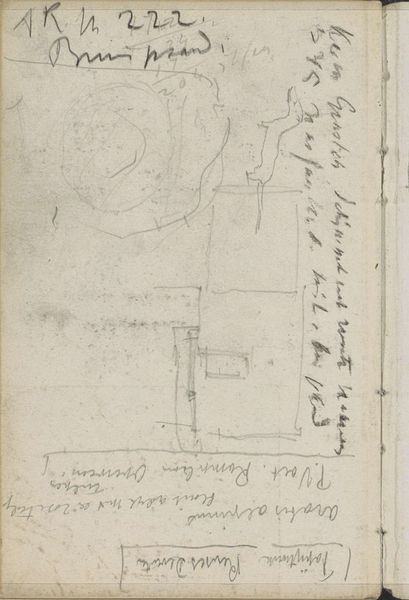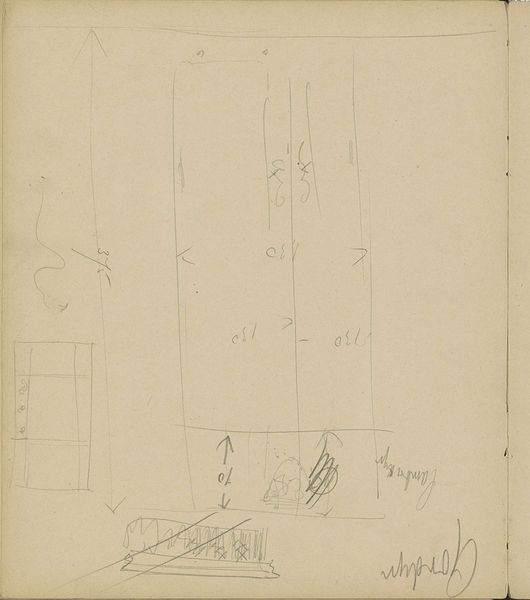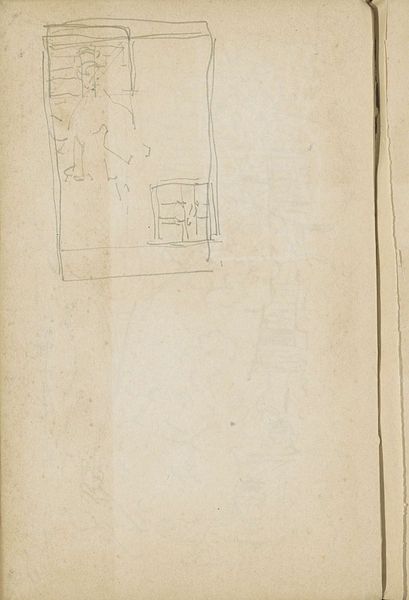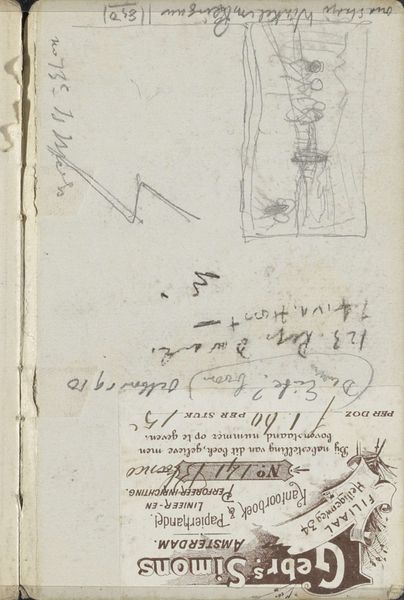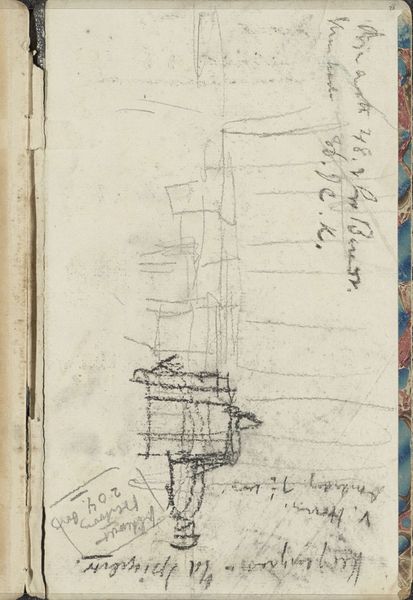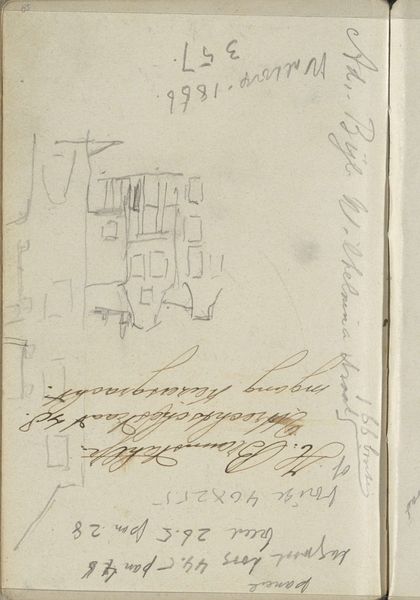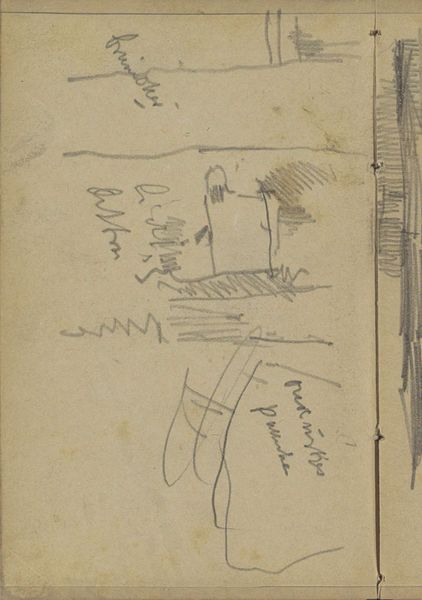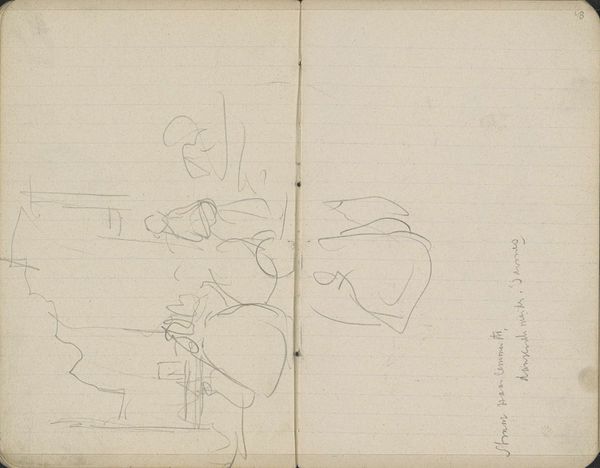
drawing, paper, pencil, architecture
#
drawing
#
aged paper
#
toned paper
#
medieval
#
sketch book
#
hand drawn type
#
paper
#
personal sketchbook
#
sketchwork
#
fading type
#
geometric
#
pencil
#
ink colored
#
sketchbook drawing
#
sketchbook art
#
architecture
Copyright: Rijks Museum: Open Domain
Editor: Here we have "Studieblad, onder andere met een kerkraam" – a page of studies, including a church window – by Carel Adolph Lion Cachet, dating from around 1905 or 1906. It’s pencil and ink on paper, currently held at the Rijksmuseum. The aged quality of the paper creates this very intimate feel. What’s your read on this sketch, with all of the textual annotations? Curator: What I see here is more than just a sketch; it’s a document of artistic process intertwined with social and economic realities. Look closely at the inscriptions accompanying the architectural drawings. They aren’t just measurements, they're records of costs and materials—glass, construction elements. Editor: I see what you mean! It almost turns the artwork into an invoice, in a way. Curator: Exactly! Cachet's detailed notes bring forth the socio-economic factors inherent to art and architecture. This piece prompts a discussion about artistic labour, patronage, and how art production is affected by political climates. Doesn't it make you think about the roles of art within the structure of society at that time? Editor: It does. The economic notes contrast with the beauty of the design. Was this a common practice to combine art and budgeting this way? Curator: We should investigate the traditions and role of the artist in the Netherlands at the turn of the century, along with period craft guilds and construction practices. The details might reveal whether this dual focus—artistic and financial—reflects an artist navigating commercial constraints or speaks to broader social narratives around labour, value, and artistry. What have you gleaned from this exploration? Editor: I now see the artwork as something that encapsulates not just an image or concept, but socio-historical conditions around its creation. Curator: Indeed. By combining close observation with contextual research, we can interpret these artworks beyond the surface level.
Comments
No comments
Be the first to comment and join the conversation on the ultimate creative platform.

